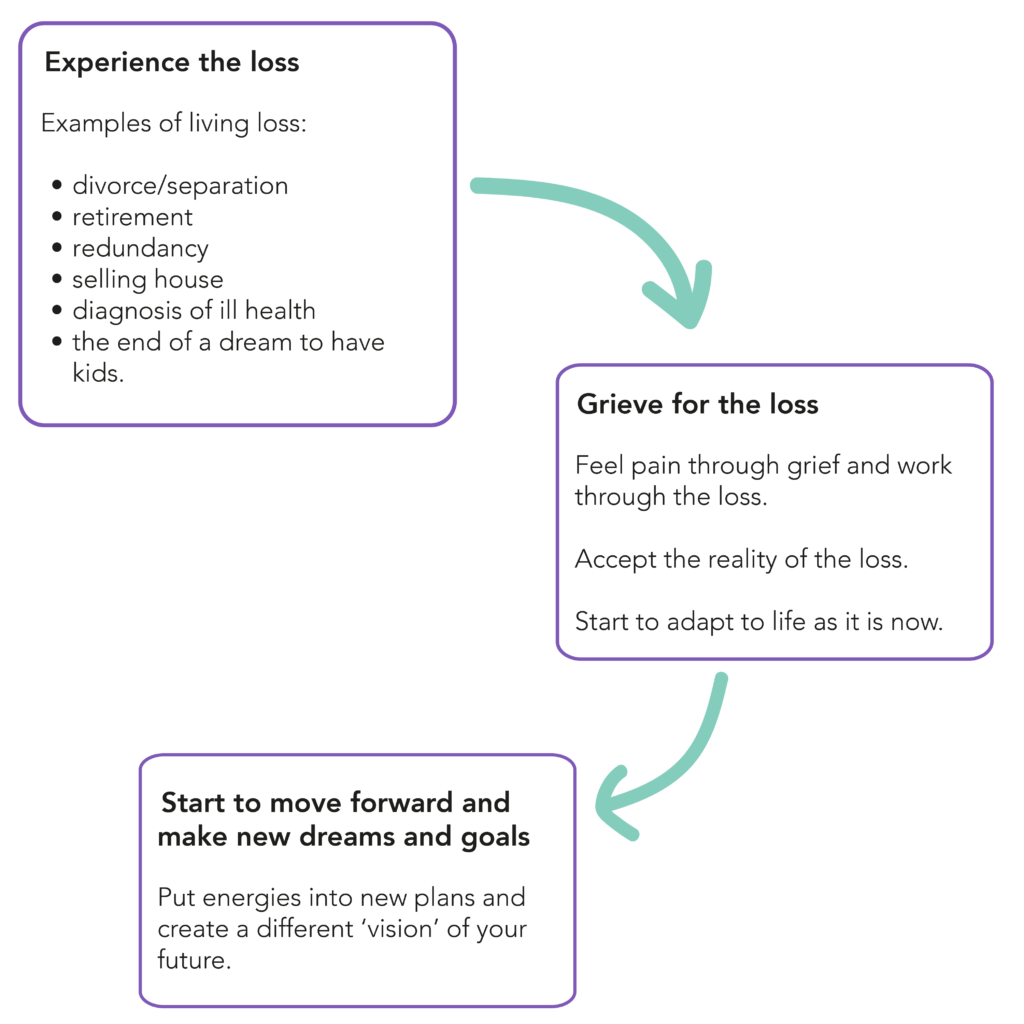Experiencing loss is part of life. We all know the feeling of panic that rises when we lose our purse, train ticket, keys or a special memento. We usually associate grief and sadness with the death of a person we loved but any kind of big change or serious loss, can cause a kind of grieving process, such as:
- divorce, the end of a relationship or friendship
- the end of a job (such as redundancy) or career (including retirement).
- selling your home and/or moving away
- children leaving home
- leaving home or college and saying good-bye to your old life and friends
- the loss of good health, energy, mobility or the loss of a limb
- an accident, diagnosis of ill health or financial problems
- ‘what might have been’ – the end of a dream or future plans for yourself such as having a child or youthful ambitions to be a vet or football player.
This is known as ‘living loss’. If you’re facing the ending of something that was important to you – it’s normal to feel deep sadness and pain. This is because the depth of grief that someone feels usually reflects the importance of the loss to that person.
It’s important not to feel any guilt or shame about how you’re feeling or think that’s your grief is not appropriate. Any form of loss will need a time of re-adjustment. This could mean:
- making new friends after a divorce or move to a new area
- finding new interests after retirement
- building confidence again after an illness
- forming new dreams and goals for the future
The Coping with living loss diagram can help you to understand how people react and re-adjust to living loss.

Read a descripton of the Coping with living loss diagram
Download this diagram as a pdf:
